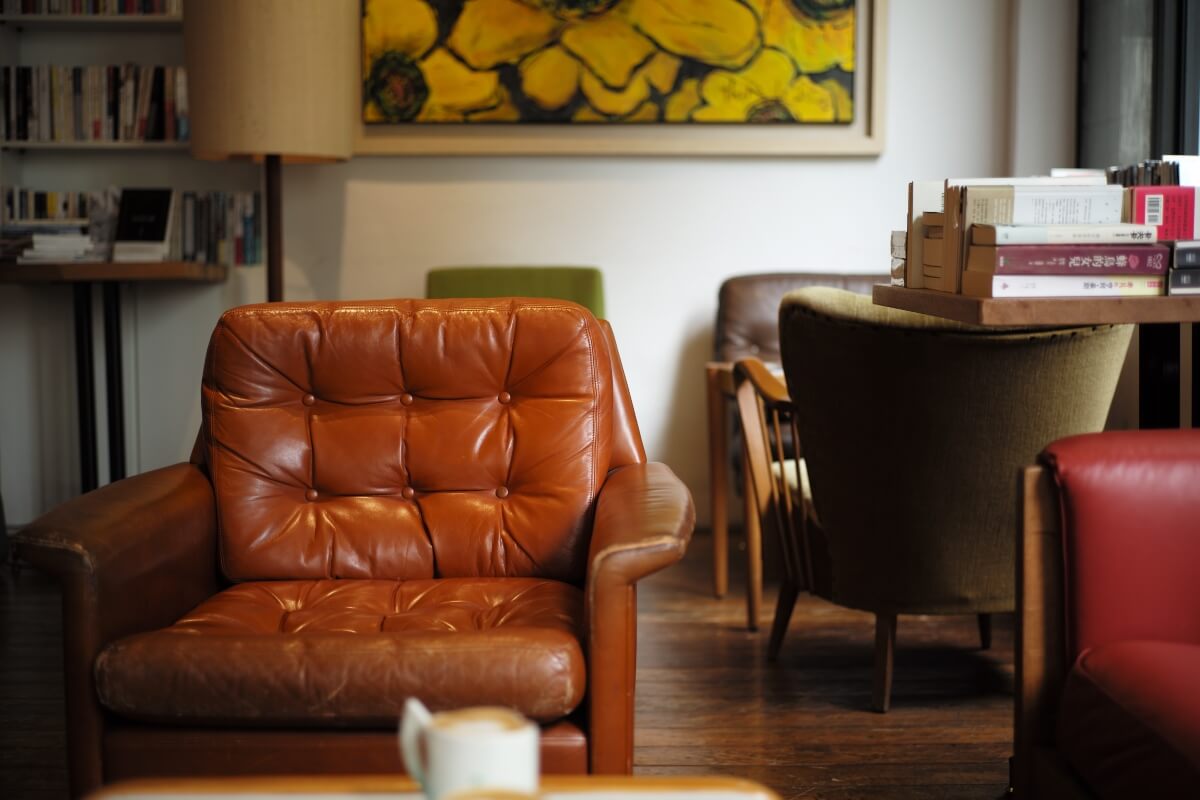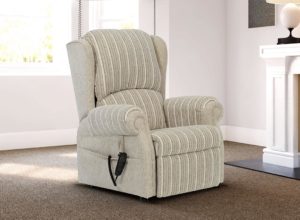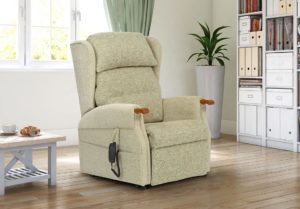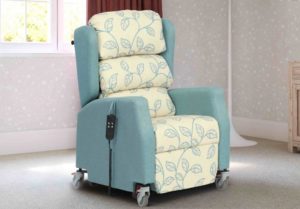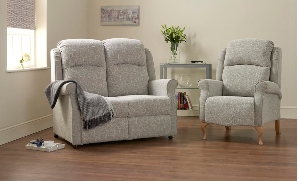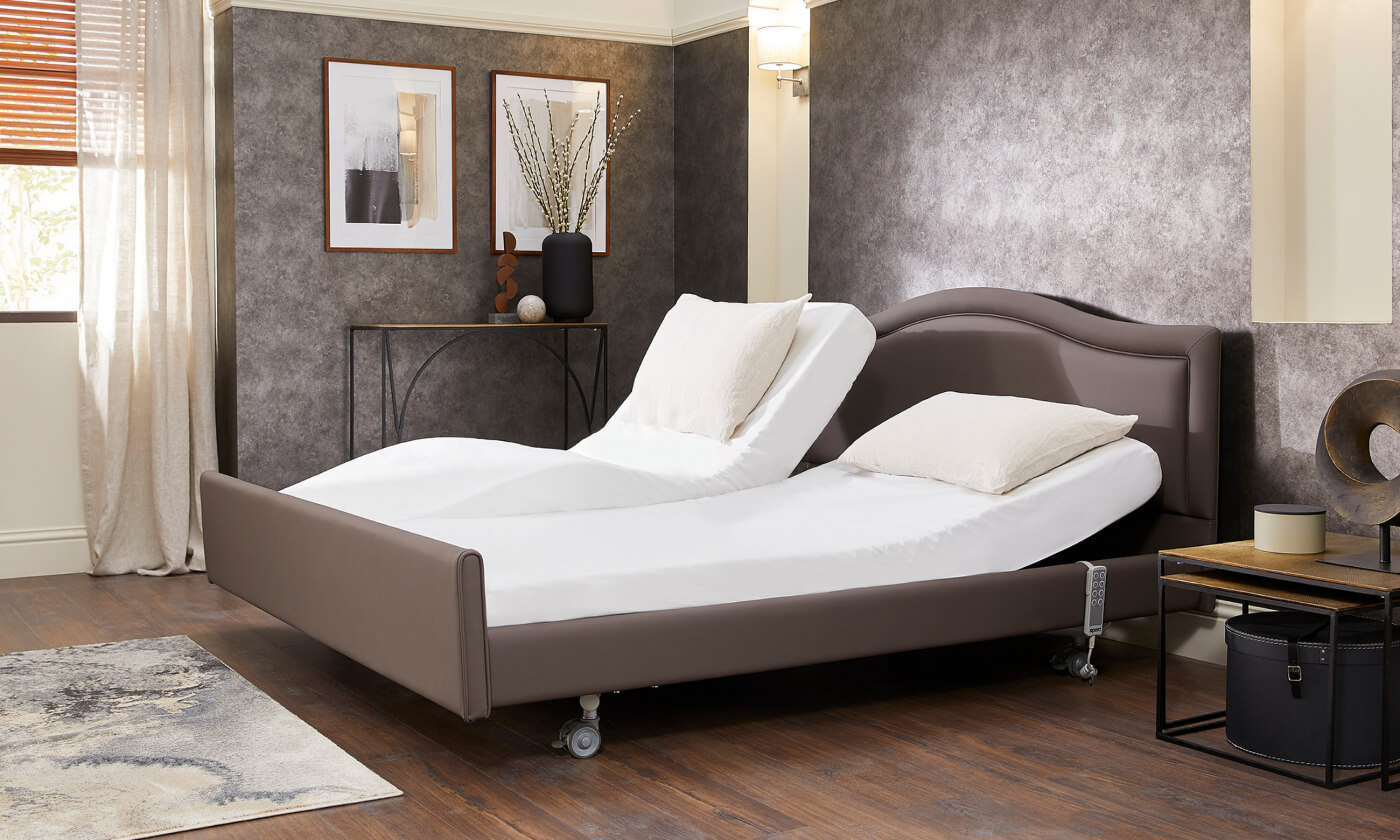Best Chairs For The Elderly
Social Links
Thanks to advances in medicine and healthier lifestyles, people in the UK are living longer than ever before. In fact, the population aged 65 years and over is growing faster than other age groups and by 2050, it is projected that one in four people in the UK will be aged 65 years and over.
The number of senior citizens living in specialist retirement housing or in care homes is relatively low – around 400,000 people according to Age UK – as most older people opt to live in their own homes. Having made that choice, it’s essential to be as comfortable as possible when it comes to our surroundings, from where we sit to where we sleep. A good quality mobility chair enhances quality of life in the immediate and longer-term.
But which kind of chair is best for the elderly? For optimal comfort as well as back, thighs and knee support, there should be just the right amount of padding, it should allow for flexibility and should be easy to clean.
Wading through the information to establish which rise and recline chair suits your particular situation best is time consuming, so we’ve done the hard work for you.
Table of content:
Best chairs for elderly
1. Rise and recliners chairs for elderly
Rise and recliner chairs are designed to help seniors stand up or sit down. Electric powered, users can adjust the rise recliner chair so they are safely lowered into a seated or lying position. A touch of another button helps them to stand up again. Available from the Mobility Furniture Company in three motor action types, five backrest styles and a multitude of upholsteries, colours and sizes, you will be sure to find a chair to suit your health needs, body shape and home décor. For example, the rise and recline chairs within the Hampshire Selection has a lumbar support version that suits people with back problems. An added layer of padding on the arms brings additional comfort.
2. High back chairs for seniors
Back pain is particularly common in older or disabled people, so it is crucial that chairs that provide a high level of back support are used. We recommend that you avoid the ones with a low back, as the lower the back, the lower the extent of support. Instead, high back chairs for the elderly are preferable as they encourage good posture and support the full spine, rather than just the lower section.
A high back chair as seen in the Cheshire Collection will hold the person’s back in a neutral and natural shape, prevent slouching and reduce the pressure placed on the spine. Chairs with backs that extend to the neck offer the highest level of support.The angle of the back of the chair should not lean too far back or forward. Leaning too far back will reduce the support and allows the user to slouch, and a backrest that leans too far forward can place too much stress on the spine and hips. The backrest should support the natural shape and curve of the spine. If the backrest goes up to the neck, it shouldn’t push the head too far forward as this can encourage bad posture and put too much stress on the neck.
3. Homecare chairs
Designed for safety and comfort, our homecare recliner chairs are tailored to provide assistance for those with limited mobility and lower movement overall. The full range of reclining comfort can be enjoyed by a simple-to-use remote control. Wheels allow the chair to be moved from room to room by a carer. And the upholstery is easier than ever to keep clean.
A best seller from our homecare range is The Truro. Along with its fully adjustable rise and recline dual tilt, The Truro has flexible choices in pressure care and support, enabling customers to design a chair that ideally suits them and their evolving needs.
4. Rise and recline settees
Settees can recline too – perfect for when two or three people have different ideas of what makes them comfortable! Operating like a rise and recline chair, the settees have a handset that allows seniors to lie back and relax or tilt the chair forward and up to help them stand.
Available as stock items, our rise and reline settees can be customised in a wonderful array of upholsteries and fabrics, many that match our chairs.
How to choose a chair for elderly:
Key considerations when choosing a senior-friendly chair include comfort, adjustable features, wheels, pressure management, upholstery and cleaning:
1. Comfort
As well as being comfortable to get into and out of, the ideal chair for senior must be comfortable to sit in as this can make a big difference in our ability to get the right amount of rest and relaxation, and face the activities of the day.
Choosing a made-to-measure specialist chair for seniors means you can enjoy a seat that is the perfect height, width and depth. There are two options:
- Take the measurements yourself and buy it over the phone;
- Ask a qualified company representative to bring relevant rise and recline chairs to your home for you to try out, and take measurements at the same time.
Having a bespoke chair means an elderly person can enjoy its benefits to the full. Otherwise, if the seat is too high, the person’s feet can’t touch the floor, which puts pressure on the back and makes legs feel uncomfortable. And if the seat is too low, the legs aren’t supported enough and the back of the thighs may ache.
The seat needs to be the ideal width as well. Too wide and it won’t support the torso. Too narrow and it may be a bit of a squeeze. Likewise, if the seat is too deep, the elderly person won’t be able to sit with their back fully supported. Adding cushions in this context does not provide even support.
The answer? A made-to-measure chair for the elderly, every time.
2. Adjustable features
An adjustable chair designed and engineered with attention to detail offers seniors support in all the right places. Older people should be able to sit for long periods with their back, hips and legs positioned correctly. Adjustments can be made to various features to make the entire experience more comfortable.
Single motor versus dual motor
Single motor rise and recline chairs have one motor to control all of the electric functions on the chair, so the backrest, footrest and riser functions are all operated through a single set of buttons.
Dual motor rise and recline chairs have two (or more) motors to power the back and footrest independently, giving more choice of seating position. Some even have a third motor to power the rise function, which tips the seat base forward so the occupant can stand up.
Tilt in space
This is when the seat and back remain fixed in position as you recline, reducing the risk of friction or other damage to the skin as the chair moves. Another benefit is that the legs can be elevated above the hips, helpful for elderly people with poor leg circulation, those with neck and back pain and for anybody for whom back and pelvis support is a particular concern.
Wall hugging
Designed especially for seniors who are short on space, wall hugging electric rise and recline chairs move forward as they recline, so can be positioned about 10cm (4 inches) away from the wall.
Controls
The position of the reclining chair is changed using hand-operated controls, which are usually kept in a special pocket on the side. The controls have a series of large buttons, sometimes with pictures to show what they are used for. Some even light up so you can see them more easily in the dark.
Single motor rise and recline chairs tend to have simpler control panels because they have less functions than dual motor chairs.
Back rest
The backs of reclining chairs come in different styles. Choose between them depending on the look that you prefer and – more importantly – your physical needs and requirements.
- Two tier: the top cushion is filled with extra padding so the chair provides extra support for the spine and neck.
- Waterfall: tiered layers of padding in three separate pillows that cascade down the back. Each compartment can be opened so the filling can be adjusted for precise control over back and neck support.
- Button back: due to the buttoning, the fillings are slightly compressed and therefore firmer, for seniors who want a comfortable yet firm level of support.
- Cushion back: the top, large back cushion is sewn laterally to hold the internal fibre in place. Suitable for those looking for especially good head support in the recline position.
- Lumbar support back: combines a waterfall back with a cushion back and has an extra pair of internal lower back support cushions for added support. It also has the benefit of keeping the user in the centre of the chair.
Rise and recline chair arms
Armrests help us to sit and stand. Some older people find that wooden arm ends offer a firmer grip than an upholstered arm. Angled arms are another option.
Rise and recline chair batteries
The majority of electric rise and recline chairs have a battery back-up system so that in the event of a power cut, users aren’t left in a reclined position, unable to get up. Back-up batteries are small – the size of a small box – and need to be replaced after use unless they are rechargeable.
Anti-crush feature
Peace of mind is priceless, so people with pets or young children in the house might opt for a chair with an anti-crush feature. There are currently two ways this can work:
- A barrier stops cats, dogs or small children from getting beneath the chair;
- Sensors detect the presence of something underneath the chair and trigger a halt mechanism that stops it from lowering.
3. Wheels
Wheels allow us to transport loved ones quickly and safely between rooms within their rise and recline chair.
4. Pressure management
Rise and recline chairs certainly enable older people to move around more whilst in a seated position, but the need for pressure relief to avoid areas of skin becoming inflamed and sore can still be an issue for those with particular health concerns. Three additional features can be considered:
- A built-in massage system;
- Memory-foam seats and footrests that mould to your body shape;
- Gel pads that spread the pressure of weight more evenly. These are often available free within the NHS but are relatively inexpensive to buy privately.
5. Upholstery
Upholstery shouldn’t be the most important consideration when it comes to choosing an electric reclining chair for the elderly, but the house-proud will definitely want one that fits in with their current décor. Choosing a bespoke – chair for the elderly means you’ll have full control over the upholstery and the colour of the end product. It’s about style, comfort and keeping it clean.
6. Maintenance/cleaning
Regular use of any item of furniture leads to the need for cleaning, and a rise and reclining chair is no different. It doesn’t take long to vacuum it at least once a week, but it will need a deep clean every few months.
Look at the care manual or tag to establish if there are any cleaning products to avoid – some upholstery is water-safe and other upholstery is solvent-safe.
What are the benefits of a chair for elderly?
Have you ever stood up from a chair and felt stiff, aching and in need of a stretch? Being properly aligned and having the seat at the optimum height will help to ensure that when you stand, you don’t necessarily experience these residual problems. A comfortable chair for seniors can bring additional core benefits:
1. Independence
It’s great being able to sit down and stand up without asking for help. At the touch of a button you are reclined into comfort, at the touch of another your feet can be elevated to the exact position that feels fantastic. And when you’re ready to stand up, it couldn’t be easier as the chair gently tilts forward to help you to your feet.
2. Health
Some degree of joint pain affects almost everybody as we get older; a staggering nine million people suffer from osteoarthritis in the UK. It can affect joints from the fingers to the toes, and is particularly debilitating when it comes to the knees, back and neck.
Conventional chairs and sofas can exacerbate joint pain along with osteoporosis symptoms, but the right chair for elderly has the opposite effect.
Similarly, sitting in the same position for long periods of the day can be painful. Electric rise and recline chairs allow elderly people to sit – and recline – in a range of positions without having to move. Pressure sores are thus avoided and, along with painful areas on the lower legs and feet, are much more likely to heal when the legs can be elevated.
3. Sleep, rest and relaxation
We are constantly hearing how important it is for mental and physical health, yet as we age, we tend to have a harder time falling asleep and more trouble staying asleep.
Almost half of older adults have symptoms of insomnia, according to a study in the Journal of Clinical Sleep Medicine. There are all sorts of reasons why older people are affected by sleep issues, from side effects of medication to stressful life events and ill health. Having a safe and comfortable place where we can take sanctuary on evenings when sleep eludes us, is a huge relief and increases the likelihood of drifting off ten-fold. Plus, if a little rest and relaxation is needed during the day, a rise and recline chair can be great for a catnap.
The bottom line
An adjustable chair for elderly can undoubtedly improve your quality of life, enhance your health, independence and even the look of your sitting room. The Mobility Furniture Company has been in the business for decades. We are here to help you choose the right specialist chair for your individual needs, arrange speedy delivery and provide a high level of after sales care.
*This website contains general medical information. The medical information is not advice and should not be treated as such. Read our full Medical Disclaimer here.
